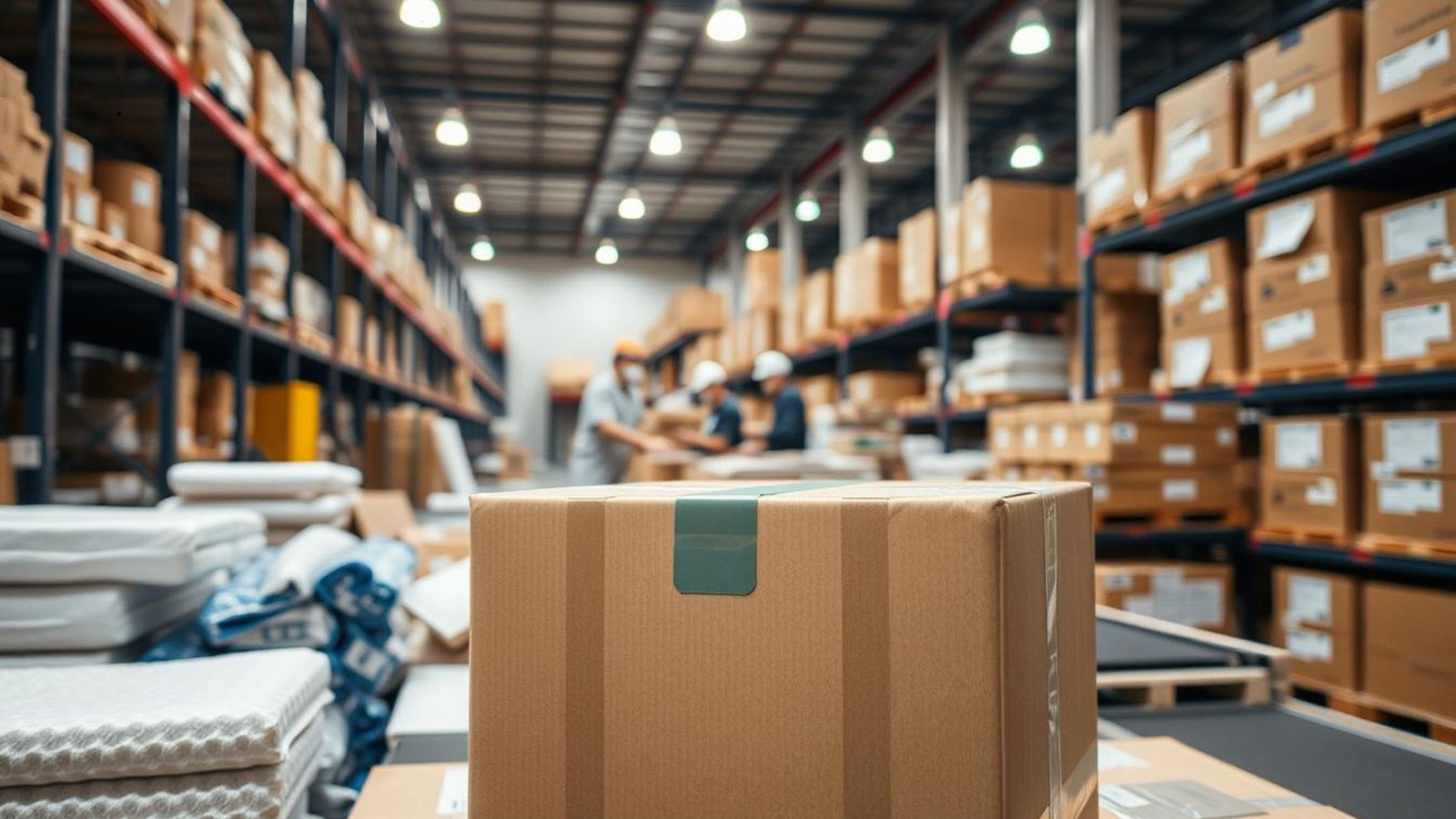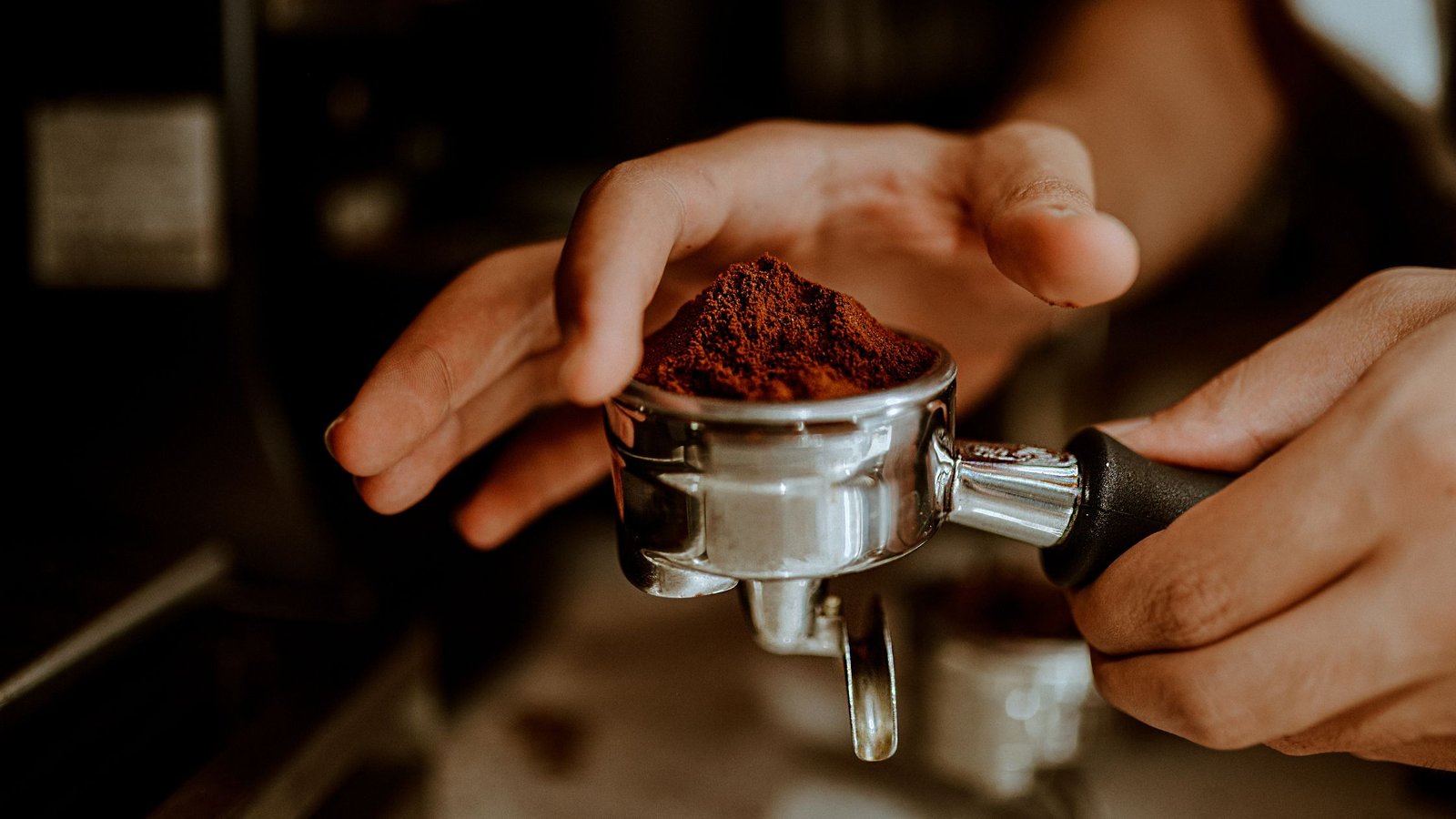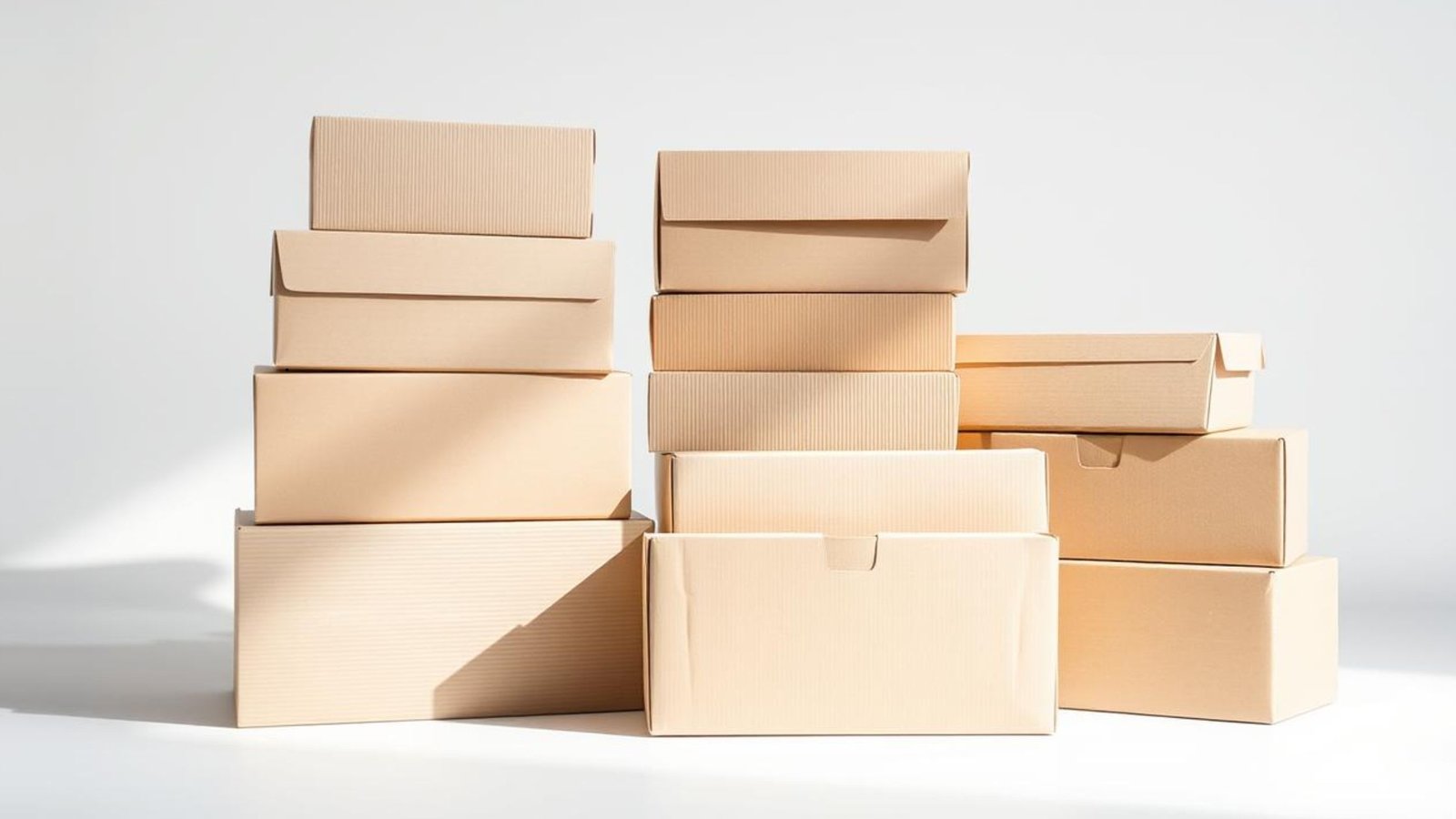Imagine waiting for a package, only to find it smashed up when it arrives. Ugh, nobody wants that headache! Safe shipping practices are your best friend when it comes to keeping your packages safe and sound. They ensure that your items arrive at their destination without a scratch.
By using solid packaging—like a sturdy box cardboard large—you cut down on the risk of damage or loss. This means your packages arrive in tip-top shape, and your customers stay happy. Getting the hang of how to package and label your items is the first step to nailing this.
Not only does this protect your goods, but it also screams professionalism. It’s like putting your best foot forward, you know? Safe shipping practices build trust with your customers and keep the whole process smooth as butter.
Key Takeaways
- Safe shipping practices are a must for protecting your packages during transit.
- Reliable packaging solutions, such as sturdy boxes, help prevent damage and loss.
- Proper packaging demonstrates your expertise and enhances customer trust.
- A great shipping experience starts with getting the packaging and labeling of boxes for shipping right.
- Safe shipping practices lead to happier customers all around.
Understanding the Importance of Safe Shipping Practices
Safe shipping practices are the backbone of any business that ships products. They keep your packages secure, maintain shipping integrity, and help you avoid wasting resources. Smart strategies prevent damage and loss, which keeps your business looking trustworthy and respected.
When customers get their orders in perfect condition, it’s a win for your brand’s reputation. Additionally, it turns them into loyal fans who continue to come back. Honestly, who doesn’t love a seamless delivery experience?
Preventing Damage and Loss
Safe shipping practices are your go-to for avoiding damaged or lost packages. Using reliable packaging methods—such as selecting the correct box size or cutting boxes to fit perfectly—can significantly reduce the risk of damage during transit. Here’s how to step up your game:
- Use high-quality materials for packaging, like heavy-duty cardboard.
- Add proper cushioning for delicate items to keep them securely in place.
- Seal boxes tightly to prevent anything from shifting around.
Ensuring Customer Satisfaction
Your shipping process has a big impact on how happy your customers are. When packages arrive safely, customers feel valued and appreciated. To make that happen, try these:
- Share tracking info so customers know where their order is.
- Respond fast to any shipping questions they might have.
- Offer flexible return policies for damaged items to ensure a hassle-free experience.
Choosing the Right Packaging Materials
Selecting the right packaging materials is crucial for ensuring your shipments remain safe and intact. The right stuff not only protects your products but also shows you mean business. The success of your packaging depends on the product type, shipping method, and box size—especially if you’re wondering, “Where can I get a big box for shipping?” Let’s break down the options and how to choose wisely.
Types of Packaging Materials
There are a variety of packaging materials available to meet your shipping needs. Knowing what’s available helps you make smarter choices. Here are some go-to options:
- Cardboard boxes: Super versatile and strong, perfect for most products.
- Bubble wrap: A lifesaver for cushioning fragile items during transit.
- Packing peanuts: Great for filling empty spaces in larger boxes to stop items from shifting.
- Strong tape: A must for sealing boxes securely.
How to Select the Right Box Size
Choosing the right box size is crucial, especially for large box shipping. A box that’s too large can let items rattle around, leading to damage. Too small, and you might crush your products. If you’re shipping something massive, you might even ask, “What’s the biggest box I can use?” Here’s how to get it right:
- Measure your items carefully to know their exact dimensions.
- Factor in space for cushioning materials in your measurements.
- Select a box that fits snugly without excessive space.
Safe Shipping Practices for Fragile Items
Shipping fragile items requires extra care to prevent them from breaking. Using the right techniques ensures your items arrive in one piece. Double-boxing and proper cushioning are your best bets for success.
Double-Boxing Techniques
Double-boxing is like giving your fragile items a protective suit. You place your item in a smaller box, then put that inside a larger one, filling the gap with cushioning. This setup maintains stability and absorbs shocks during transit, ensuring your items remain safe.
Utilizing Proper Cushioning
Choosing the right cushioning is super important. Bubble wrap, foam peanuts, and air pillows are all solid choices. Ensure that your item is completely wrapped with cushioning to prevent it from shifting. This reduces the risk of breakage, giving you peace of mind.
Labeling Boxes for Shipping Effectively
Labeling boxes for shipping is crucial to ensuring your packages arrive at their destinations on time. Clear shipping labels provide key information, such as what’s inside, how to handle it, and the destination. This ensures your packages move through the system without a hitch.
Importance of Clear Labels
Clear shipping labels are like a roadmap for carriers and delivery teams. When labels are easy to read, the shipping process flows smoothly. Including the address, sender details, and any special instructions makes a big difference. It helps packages arrive quickly and in great condition, which keeps customers smiling.
Where to Position Labels on Boxes
Where you stick those labels matters just as much as how they are written. Labels should be placed on the longest side of the box to remain visible. Avoid placing them on seams or edges, where they could get covered up or torn. Here’s a quick guide to nailing label placement:
| Label Position | Description | Advantages |
| Longest Side | Attach a label on the longest vertical face of the box. | Easy visibility during transit. |
| Centered | Position the label in the center of the side. | Reduces the chance of label damage. |
| Avoiding Seams | Do not place the label over seams or edges. | Prevents obscuring or ripping of the label. |
Conclusion
Safe shipping practices are crucial for ensuring your packages arrive at their destination safely and on time. From choosing the right packaging to labeling boxes for shipping correctly and handling fragile items with care, every step counts. These practices ensure a smooth shipping experience for everyone involved.
By following these steps, businesses can minimize shipping risks. When you prioritize safe shipping practices, you protect your packages and build trust with your customers. It’s a win-win that makes your shipping process more efficient and reliable.
About The Boxery
The Boxery is dedicated to delivering top-notch packaging solutions tailored to your shipping needs. We offer a wide range of shipping supplies, from boxes to tape to cushioning, so you’ve got everything you need to ship with confidence. Whether you’re looking for a large cardboard box or something else, we’ve got you covered.
Our approach is straightforward and user-friendly, letting you focus on shipping without the stress. At The Boxery, we understand the importance of quality packaging—it must withstand transport to keep your items safe. Our materials are designed to minimize damage risks, resulting in happier customers.
Whether you’re shipping delicate items or big orders, we’ve got the tools you need. By focusing on safety and efficiency, The Boxery supports your shipping efforts and helps you build trust with your customers. Explore our reliable packaging solutions today and pack your shipments with confidence, knowing they’ll arrive in great shape.
FAQ
What materials should I use for packaging my items?
Choose durable materials like cardboard boxes, bubble wrap, and packing peanuts. These help keep your items safe during shipping.
How do I determine the correct box size for my shipment?
Measure your item first. Then, pick a box that has enough room for cushioning. Avoid boxes that are too big or too small. You can also try cutting boxes to get the perfect fit.
What are the best practices for labeling shipping boxes?
Clear labels are essential. Include the recipient’s address, a return address, and any special handling instructions. This ensures your package is delivered correctly and on time.
Can I use a regular box for shipping fragile items?
You can, but double-boxing is better for fragile items. It adds extra protection by placing the item in a smaller box inside a larger one, filled with cushioning.
Where can I get a big box for shipping?
You can find large boxes at local shipping stores, big-box retailers, or online at The Boxery. They offer a variety of box sizes for all your shipping needs.
What are the consequences of poor packaging?
Bad packaging can lead to damaged goods, lost shipments, and unhappy customers. It can also hurt your reputation and increase shipping costs.
How can I ensure my packages are protected during transport?
Use strong materials, size your boxes right, and add cushioning for fragile items. Seal your boxes securely with shipping tape to keep everything safe and protected.
What should I do if a package gets damaged during shipping?
Contact the shipping carrier immediately if a package is damaged. They’ll guide you through the claims or refund process based on the damage.
How can I improve customer satisfaction with my shipping practices?
Use safe shipping methods like quality packaging, clear labels, and keep customers in the loop with tracking updates. This builds trust and keeps them happy.



